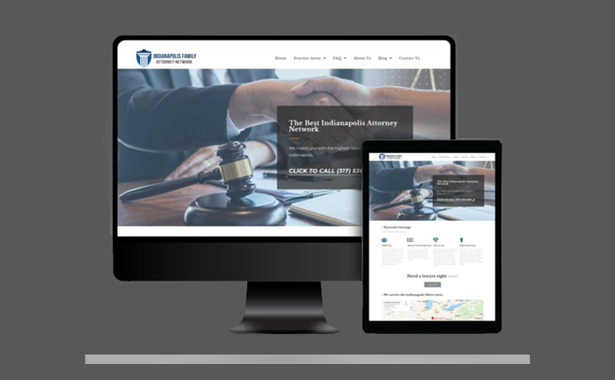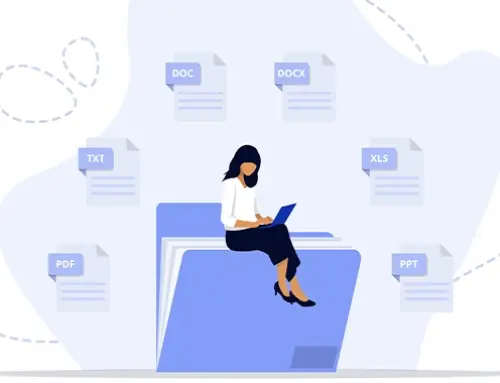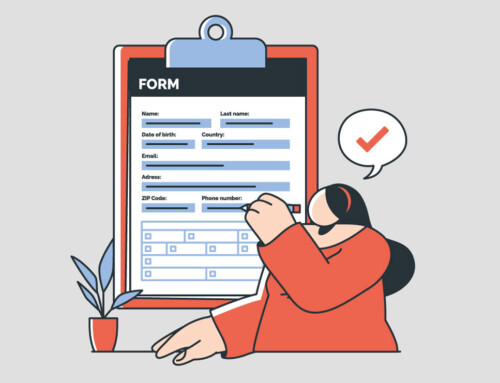Contents
When it comes to advertising your law firm, having a professional and effective website is key. Not only does it provide potential clients with information about your firm’s services and credentials, but it also serves as a valuable tool for building trust and credibility. In this blog post, we will explore best practices for creating a top-performing law firm website, as well as provide tips and examples to help you craft a website that stands out from the competition.
A well-designed and optimized website can be the difference between a successful law firm and one that struggles to attract new clients. In this guide, we will cover the following key areas:
- Understanding your target audience
- Creating a user-friendly and responsive design
- Optimizing your website for search engines
- Incorporating engaging and relevant content
- Utilizing technology and tools to enhance the user experience
- Measuring and analyzing website performance
By following the tips and best practices outlined in this guide, you will be able to create a law firm website that not only looks great, but also effectively attracts and converts new clients.
Best Practices for Law Firm Websites
A well-designed and user-friendly website is crucial for law firms looking to establish a strong online presence. Here are some best practices to keep in mind when creating or updating your law firm’s website:
- Make it easy to navigate: Your website should be easy to navigate, with clear and intuitive menus and buttons. This will make it easy for potential clients to find the information they need and contact your firm.
- Use a professional design: A professional design will help to establish credibility and trust with potential clients. Make sure your website is visually appealing and consistent with your firm’s branding.
- Include relevant information: Your website should include information about your firm’s services, team members, and experience. Additionally, include any relevant accreditation or awards your firm has received.
- Use calls-to-action (CTAs): CTAs are essential for converting website visitors into clients. Include CTAs throughout your website, such as “Contact Us,” “Schedule a Consultation,” or “Download our Guide.”
- Optimize for search engines: Optimizing your website for search engines will help it to rank higher in search results, making it more likely that potential clients will find it. This can be done through techniques such as keyword research and meta tagging.
- Use responsive design: With more and more people accessing the internet on their mobile devices, it’s important to make sure your website is optimized for all screen sizes. Using responsive design will ensure that your website looks great and is easy to use on any device.
- Use tools like RunSensible’s website builder and lead generation tools: RunSensible’s website builder can help you easily create a professional-looking website that is optimized for search engines and includes all the necessary features and functions. Additionally, the lead generation tools can help you to capture more leads from your website and improve your conversion rates.
By following these best practices, you can create a website that will help your firm to stand out online and attract more clients.
Tips for Optimizing Your Law Firm Website
In addition to following best practices, there are a few key tips that you can use to optimize your law firm website and make it more effective in attracting new clients. Some of the most important tips include:
- Utilize SEO: Search engine optimization (SEO) is the process of optimizing your website to rank higher in search engine results pages (SERPs) for relevant keywords and phrases. This can help to increase visibility for your law firm and attract more potential clients. Some key SEO techniques to focus on include creating high-quality, keyword-rich content, building backlinks, and optimizing your website’s meta tags and structure.
- Make Use of Social Media: Social media can be a powerful tool for promoting your law firm website and building your online presence. By creating and maintaining active profiles on popular social media platforms like Facebook, Twitter, and LinkedIn, you can increase visibility for your law firm and connect with potential clients.
- Use High-Quality Images and Videos: High-quality images and videos can help to make your law firm website more engaging and memorable for visitors. This can help to increase the chances that visitors will contact your law firm for more information or to schedule a consultation.
- Use a Professional Design: A professional design is essential for creating a website that looks credible and trustworthy. This can help to increase the chances that visitors will contact your law firm for more information or to schedule a consultation.
- Utilize RunSensible’s website building tools: RunSensible is an all-in-one legal practice management software that offers a variety of website building tools to help you create a professional-looking website. This can help to increase the chances that visitors will contact your law firm for more information or to schedule a consultation.
By following these tips, you can optimize your law firm website and make it more effective in attracting new clients.
Five General Scenarios for Shaping Your Law Firm Website
Let’s consider 5 general layouts and ideas that have been most successful when used in different law websites. Instead of pointing to any particular website, we’ll draw inspiration from a few scenarios you too can use.
Website Idea 1: This website is a great example of a simple yet effective design. The homepage prominently features the attorney’s photo, contact information, and a call-to-action to schedule a consultation. The website also includes a detailed practice areas page, a blog, and client testimonials.
Website Idea 2: This website showcases the firm’s expertise in a specific area of law, with a clean and modern design. The homepage includes a video introduction to the firm, as well as a call-to-action to schedule a consultation. The website also includes a detailed practice areas page, attorney bios, and a blog.
Website Idea 3: This website has a professional and sophisticated design, with a focus on the firm’s expertise and experience. The homepage includes a call-to-action to schedule a consultation, as well as a practice areas overview and attorney bios. The website also includes a blog, client testimonials, and case results.
Website Idea 4: This website has a unique and interactive design, with a focus on the firm’s approach to client service. The homepage includes a call-to-action to schedule a consultation, as well as a practice areas overview and attorney bios. The website also includes a blog, client testimonials, and a frequently asked questions page.
Website Idea 5: This website has a minimalist and modern design, with a focus on the firm’s approach to client service. The homepage includes a call-to-action to schedule a consultation, as well as a practice areas overview and attorney bios. The website also includes a blog, client testimonials, and a resources page.
Each of these law firm websites effectively showcases the firm’s expertise and experience, with a focus on client service. They all include important elements such as practice areas, attorney bios, and client testimonials, and use design and branding to effectively communicate their unique value proposition.
9 Best Law Firm Websites in 2023
For most potential clients, finding a good law firm website is not exactly common experience. Most sites are either too simple or so complicated that they’re difficult to navigate. Thankfully, there are some great examples out there that you can learn from and use as inspiration for your own site. Here are 9 of the best law firm websites around, complete with examples of what makes them so effective:
Lawyerist
Lawyerist is a blog for lawyers, by lawyers. The site was founded in 2008 by Brian Tannebaum, who remains its editor-in-chief today.
Lawyerist has always focused on helping lawyers be more productive and successful through the use of technology, continuing education and other resources. In addition to the main site there are also two sister sites: Lawyerist Pro ($99 per month) provides access to a library of online courses; Lawyerist Premium ($150 per month) gives you access to all three services plus daily news updates from around the legal world
Norcal Legal Aid
Norcal Legal Aid’s website is easy to navigate, use and read. It also has a responsive design that works well on both desktop and mobile devices. The site is mobile-friendly, which means that it adapts well to smaller screens like smartphones or tablets (a feature we’ll be covering in more detail later).
Norcal Legal Aid has a clear call-to-action button at the top right of the homepage which leads users directly into their donation form where they can give money directly through PayPal or credit/debit card payments via Stripe (or another payment processor). This makes it incredibly simple for visitors who want to donate money straight away without having any other steps involved before reaching this stage!
Amsdell Law
Amsdell Law has a nice design, with crisp photos and easy-to-read text. The navigation at the top allows you to jump straight to any section of the site, and there’s also an extensive menu on the left side that provides quick access to common tasks like finding an attorney or making an appointment.
Amsdell Law’s blog includes articles about legal issues in Colorado (such as divorce law), which may be useful if you’re considering moving there or need help with something related to living in that state. The authors of these posts seem knowledgeable about their subject matter; they cite sources when possible and provide links so readers can find additional information if they’re interested in learning more about a particular topic.
Kwon, Hoang & Assocs
Kwon, Hoang & Assocs is a Korean law firm based in Los Angeles that focuses on civil litigation. They have a strong reputation for representing plaintiff’s in personal injury cases and class actions, but also handle criminal defense work and business disputes.
- The website uses large images to promote the firm’s attorneys and their areas of expertise. These images are accompanied by brief descriptions that provide visitors with an idea of what kind of cases each attorney specializes in, which helps them make better decisions about who they want to hire as their lawyer if they need legal representation.
- There are also links to some recent articles written about Kwon, Hoang & Assocs by other news sites that highlight some of their recent successes in court or otherwise provide information about how they approach certain types of cases (e.,g., “Civil Litigation” vs “Criminal Defense”). This gives potential clients even more information than just seeing pictures alone would give them so they know exactly what kind of service they’ll receive if they hire this particular firm!
Win Law Group
Win Law Group is a great example of a law firm website that has all the right elements. The site is easy to navigate, clean, and responsive. Win Law Group also has a great call-to-action at the top of their homepage that leads visitors directly into their contact form or gives them options for calling someone from the firm directly.
Win Law Group uses bold text throughout their site which makes it easy for users with less experience on websites (like many potential clients) to quickly scan through important information about them like who they are as well as what services they provide without being distracted by other things on the page such as ads or videos that may not be relevant at all times but could potentially cause confusion if clicked accidentally while trying find something else important within this section where all these different types of content exist together without clearly separating each type into separate sections where only one type would live per area instead having multiple things happening at once which would make sense when viewing this same information elsewhere online but definitely not here given how unique this particular situation is compared traditional websites built using standard web technologies like HTML5
Belanger & Belanger PLLC
Belanger & Belanger PLLC is a great example of a law firm website that uses illustrations to convey information. The use of icons and visual cues makes it easy for visitors to find what they need, whether it’s contact information or information about the firm itself.
The site also does an excellent job of clearly stating what services are offered by the firm and how visitors can get in touch with them (via phone, email or social media). This includes links to both their Facebook page and Twitter account–two platforms where they will likely reach their target audience most effectively.
Guernsey, Halpin & Park LLP
With a clean, easy to navigate website, Guernsey Halpin & Park LLP is able to present their firm in the best light. The website is also easy to read and find information on. This makes it easier for potential clients to understand what they can expect from working with the law firm before reaching out or making an appointment.
The site has a clear call-to-action at the top of its homepage: “Contact Us.” This allows visitors who are interested in hiring them as their legal representation to easily get in touch with someone from inside the company without having to search through multiple pages or buttons that may confuse them further down into finding who they need help contacting within Guernsey’s organization structure (elevator pitch!).
It also has an easily readable mission statement, which explains what kind of work this particular law firm does best–and why people should consider hiring them over other options available out there today!
Wardlaw, Pollock & Heger LLP
Wardlaw, Pollock & Heger LLP is a law firm with offices in New York City and Westchester County. The site is responsive, which means it will automatically adjust to any screen size so you can view it on any device. It’s also easy to navigate and cleanly designed with white space that makes the content pop off of your screen.
O’Neill and Quigley, LLC
- The site’s design is clean and modern, with a responsive layout that adapts to different screen sizes.
- It uses a parallax effect to make the content appear to move as you scroll. This is a popular design choice these days, but it can be difficult to pull off well–the images need to be chosen carefully so they work together seamlessly, or else the effect will feel disjointed or even dizzying instead of immersive.
- There are lots of images and videos throughout the site; this helps keep things visually interesting without being overwhelming (it also means there are plenty more opportunities for search engine optimization).
- The contact form is easy-to-use: just enter your name, email address and message in three fields before clicking “Send.”
Building and Maintaining Your Law Firm Website
Building and maintaining a website for your law firm is an ongoing process that requires attention and care. Here are some tips to help you build and maintain a successful website for your law firm:
- Keep your website updated with fresh content. This includes adding new blog posts, case studies, and other relevant information. This will not only keep your website interesting to visitors, but it will also help with search engine optimization.
- Use responsive design. Your website should be optimized for all devices, including desktop computers, laptops, tablets, and smartphones. This will ensure that your website looks great and is easy to navigate on any device.
- Use analytics to track your website’s performance. This will help you understand how your website is performing and identify areas that need improvement. Tools like Google Analytics can provide valuable insights into your website’s traffic, bounce rates, and other metrics.
- Use a Content Management System (CMS) to easily update and maintain your website. A CMS like WordPress or Joomla allows you to easily add new pages, blog posts, and other content to your website without having to know how to code.
- Make sure your website is secure. Your website should use HTTPS and have an SSL certificate to ensure that all information transmitted between the website and the user is secure. This is especially important for law firms, as they often handle sensitive client information.
- Use a website builder that is specifically designed for law firms, such as RunSensible, which offers a wide range of features that are tailored to the legal industry, including a website builder, SEO tools, and analytics. By using a website builder specifically designed for law firms, you can be sure that your website will have all the necessary features and functionality to help you succeed online.
- Work with a professional web developer if you want a more customized website. A professional web developer can help you design and build a website that is tailored to your specific needs and goals.
- Regularly check your website’s SEO performance with SEO audit tools such as those offered by RunSensible, this will help you to identify any technical issues that could be hurting your search engine rankings, and also to optimize your website for search engines.
By following these tips, you can build and maintain a successful website for your law firm that will help you attract and retain clients. Additionally, by using RunSensible website builder, you will have all the necessary tools to optimize your website for search engines, and increase your visibility online.
Make Your Website Work for You
In conclusion, building and maintaining a high-quality website is essential for any law firm looking to attract and retain clients in today’s digital age. By following best practices, implementing SEO techniques, and utilizing tools like the website building and design features included in RunSensible, you can create a website that effectively showcases your firm’s unique strengths and provides a positive user experience. Additionally, by regularly updating your website’s content and design, you can ensure that it remains current and relevant, which is essential for keeping your firm’s online presence strong. Remember, your website is often the first point of contact that potential clients will have with your firm, so it is crucial to make a great first impression. Thank you for reading, and we hope that this guide has been helpful in your efforts to create a top-notch law firm website. Sign up now to start building your law firm’s website today or, if you are interested in learning more about RunSensible, please read more of our articles or contact us for more information.
FAQ
What are some best practices for a law firm website?
User-friendly design, mobile responsiveness, clear navigation, quality content, and prominently displayed contact information are some best practices for a law firm website.
How can I optimize my law firm website for search engines?
Optimizing your law firm website for search engines involves using relevant keywords, creating quality content, and ensuring your website is mobile responsive and easy to navigate.
How can a legal practice management software like RunSensible help with my law firm website?
RunSensible offers website building and management tools, as well as the ability to manage and update your website easily, so you can focus on growing your practice.
Disclaimer: The content provided on this blog is for informational purposes only and does not constitute legal, financial, or professional advice.






